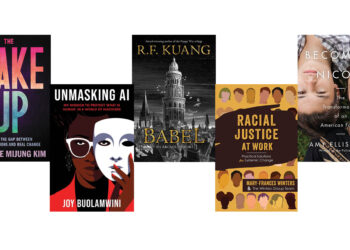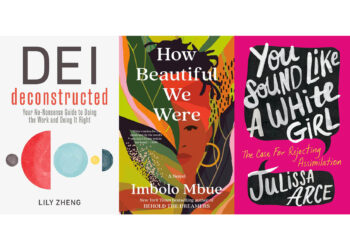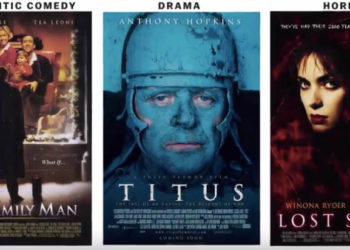It’s almost exactly five years since I first wrote about diversity in scholarly publishing — specifically the lack of women in leadership roles in our profession. This issue and others relating to the lack of diversity and inclusion in scholarly publishing are now regular topics of discussion, here on the Kitchen, at industry conferences such as SSP, and on social and traditional media. The problems we face, in our own community and beyond, are very far from being solved, but the fact that they’re now being raised and debated gives me hope that progress is starting to be made.
However, the fact remains that there are still woefully few women at the top of scholarly publishing – among them, Amy Brand (Director of the MIT Press), fellow chef Alison Mudditt (CEO of PLOS), and today’s interviewee, Vicky Williams (CEO of Emerald Publishing). Under Vicky’s leadership, Emerald have been actively addressing the challenges of diversity at the organizational level; she spoke about the company’s experience at the inaugural Outsell Women’s Conference in New York City on June 7, 2018) in a talk entitled Improving the Metrics: Creating a culture of diversity and inclusion. For those who missed her talk, she also kindly agreed to share her thoughts here.

When did you first realized that there was a problem with diversity at Emerald?
In the Summer of 2015, I was preparing for an internal ‘think tank’ event, considering what topics I’d like to raise. Glancing around, seeking inspiration, an uncomfortable truth struck me – somehow we had reached a position where I was the sole female on any of our subsidiary boards, and there was the same imbalance in our senior management group. Obviously in an organization of our size (~400 employees across the Group), we have a relatively small senior manager population, and therefore numbers can skew year-on-year. Nevertheless, something clearly wasn’t quite right. I’ve worked at Emerald for a long time, and had personally never felt any barriers to progression. I’d also never felt that my gender was an issue. But given the few female role models now at the top of the organization, we needed to do something to redress the balance and promote the positive power of diversity.
What action(s) did you decide to take as a result?
In November 2015, we launched our diversity program, STRIDE. It had unanimous support from all of my male board colleagues, and they have been strong and authentic advocates ever since – an important signal in any business. I set up a Steering Committee with representation from across the business, and we started to pull our first year’s program together. What quickly made me realize that this was the right thing to do was how warmly and positively the Steering Committee responded to being involved – it has become a shared passion and something we all feel immensely proud of and committed to.
Can you tell us a bit more about the STRIDE program?
Initially our program focused on gender diversity so that we could create some momentum and positive change. A series of external speakers were booked – all female leaders across multiple industries with real, human stories to tell. Our speaker series is still the most popular and powerful aspect of our program – largely because it shows that we’re all human, and all grappling with the same issues. This was complemented by a range of internal panel events on issues such as work-life balance, and some bespoke skills training in areas such as unconscious bias. Importantly, all of this unlocked the dialogue – what I hope we demonstrated is that diversity is important to us as an organization, and if there are changes that need to be made to promote diversity, then we’re very open to having that discussion.
What were the main challenges you faced?
Talking to a number of other women who have launched similar programs or networks, it’s not unusual for this to be organizationally down-played as “the women’s group”. In all honesty, we suffered from a bit of that too, and it can demean the work that’s going on. This did make us think seriously about how we included men in the program though – we needed to avoid diversity being seen as a “women’s issue”. Male representation on the Steering Committee helped, as did board and senior management involvement and sponsorship.
How successful has the STRIDE program been?
When I look at our numbers now, the difference is quite stark. Back in the Summer of 2015, Emerald Publishing was an all-male board of six (at the time, I was CEO of another Group subsidiary), and our senior management comprised 30 men and 16 women. Running those stats now, the board ratio is 5:2 men:women, and senior management is 50:50. I wouldn’t for a minute put this change solely down to STRIDE, but I do hope and believe that we’ve created the right environment and the right conditions to remove any real or perceived glass ceilings.
What about diversity more generally at Emerald – what has stayed the same, what has changed, and why?
Diversity now sits at the heart of Emerald and is embedded in our strategy. It’s also a key part of our publishing philosophy and employer brand. A very visible internal commitment has a ripple effect across an organization, breaks down hierarchies, and builds trust. It’s often something people comment on in interviews. This year, our program has broadened to encompass aspects of race, sexuality, and mental health under the theme of ‘inclusion’. These are all challenging subjects to discuss in a work environment, though they shouldn’t be, and I’m proud that we’re raising both awareness and understanding.
Recruitment is still solely on merit; we don’t have quotas. While quotas may have a role to play in redressing gender balance, I don’t know any women who would want to be simply making up the numbers. As published recently, we also have a gender pay gap, driven largely by the high percentage of women in the lower pay quartiles, typically entry-level positions in editorial and marketing functions. The gap is also driven by a high proportion of men in ‘middle’ pay bands, which are dominated by technology roles – an area we have typically struggled to recruit women into. While we’ve done further analysis to be sure that men and women are being paid the same for doing the same role, clearly there’s more work for us to do here, without purely chasing down a statistic.
What advice do you have for other organizations looking to improve diversity and inclusion?
I come back to creating the right conditions and the right environment for parity and equal opportunity – this involves things like:
- Flexible working – creating cultural change here, rather than policy or procedural change
- Progressive maternity and paternity policies
- Unconscious bias, textual analysis of job adverts, blind CV screening, and balanced interview panels
- Bystander training — giving people the tools and techniques to be able to interrupt inappropriate behaviors that they witness
- Mentoring, coaching, and sponsorship
Looking to the future, what are the next steps for improving diversity and inclusion at Emerald?
As we’ve matured, we’ve also formalized our Steering Group to develop policies and practices, and we have a globally engaged team who are free to develop their own STRIDE programs – so, events take place in Emerald offices from Boston to Kuala Lumpur to Sao Paulo. We’re working with local businesses where we find common ground, building partnerships in the academic community to support diversity, and working with Umbrella Analytics as a beta partner. Above all, we’re talking about diversity a lot, and that has got to be a good thing.
Discussion
5 Thoughts on "Creating a Culture of Diversity and Inclusion: An Interview with Vicky Williams, CEO Emerald Publishing"
This is all great to hear Vicky. As a former Emerald employee I also never felt held back or unheard due to gender, but it is great to see that Emerald is facing this industry-wide issue head on. While I feel fortunate to have worked with many strong female leaders such as yourself across the industry, I also realize that instead of feeling fortunate, this should be commonplace! Its wonderful to hear that you are facing multiple issues of diversity, not just gender, and thoughtfully addressing what it means to be truly inclusive.
Thanks Clare – you’re completely right, I also tend to use words such as “lucky” and “fortunate” when I talk about my own experiences, like I should be grateful for being judged as an equal! Lots of social conditioning there…!
Gender diversity is important, but we must also include race and ethnicity, as well as other identities, when we talk about diversifying publishing. All of the women directors mentioned above are white, as are the current directors of Princeton University Press, Johns Hopkins University Press, and Columbia University Press. Roughly thirty-nine percent of the directors of the 146 global member presses of the Association of University Presses are women (largely white). We disbanded WISP (Women in Scholarly Publishing) over a decade ago because the organization had succeeded in supporting (white) women’s rise to leadership roles in university press publishing. The AUP has doubled down on this issue by forming an active Diversity and Inclusion Task Force and supporting various initiatives including the successful Mellon-funded University Press Diversity Fellows program. I am much more aware of the need to create inclusive teams representative of our communities, as well as the scholarship that we publish, and excited to see efforts finally gaining traction in the university press world.
Completely agree, Lisa – we started with a focus on gender, but have widened our focus considerably to other aspects of diversity and inclusion this year.
Our head office is in Bradford, UK, which is a culturally diverse community, and our employee base should be more reflective of that than it is. There’s a lot of work for us to do. I’m keen to learn how others are approaching this, both within and outside of our industry. We’ve had some really interesting discussions with heads of diversity programs at US libraries recently – they embed diversity and inclusion within their organisational philosophy – from performance reviews to vendor / other commercial relationships.
Vicky, thank you for sharing your experiences and progress. It is clear to me that you were ahead of many in the proactive approach you led at Emerald and it is great to see what you have been doing. At Cambridge, the Press Board is 7:3 men: women but this is reversed on my Academic Board which is 7:4 women: men, but the pay gap shows we have a long way to go still (for the same reasons you describe at Emerald). As everyone is saying I don’t think there are conscious barriers to women progressing, but in many areas there are still imbalances and we need to keep on working to address these through, for example, the variety of measures you describe. Sometimes this does mean having challenging conversations, but that’s fine. I also agree with the importance of really broadening this to ensure we have fully diverse and inclusive working environments, ensuring this conversation doesn’t stop at gender equality. Our goal has to be to enable all our colleagues to be their authentic selves at work, and for everyone to feel respected, supported and able to have fun! When we truly achieve this, then our industry will be attracting in, and retaining, a brilliant and diverse talent pool.



